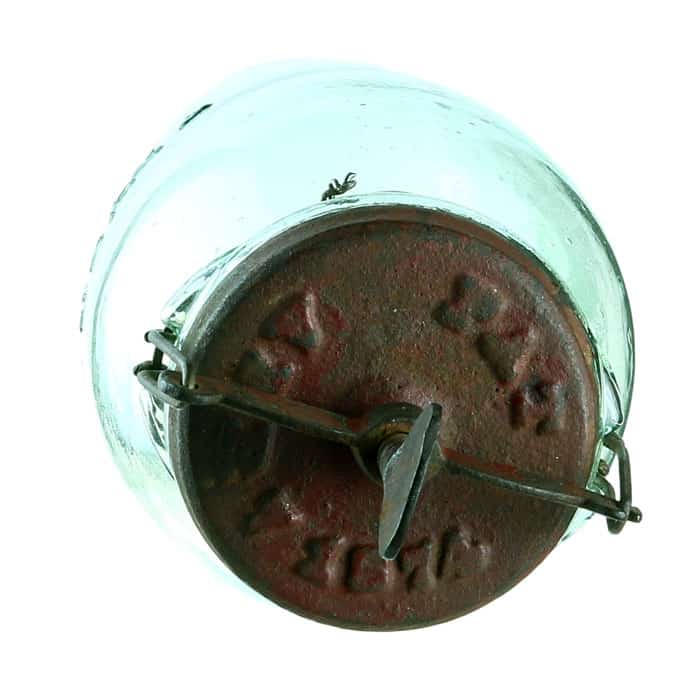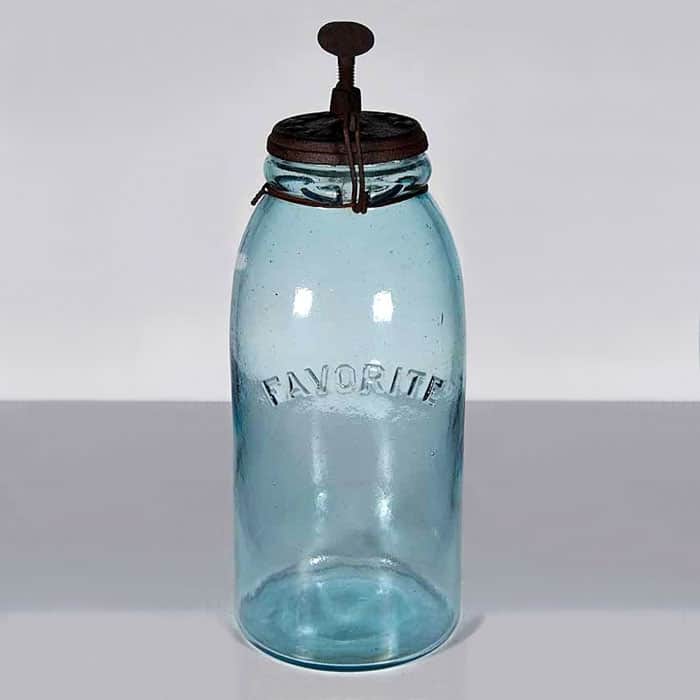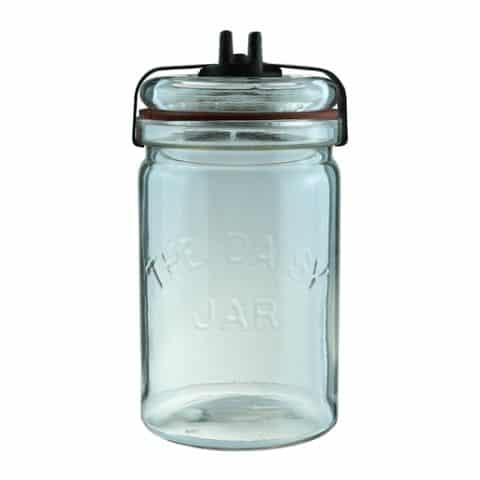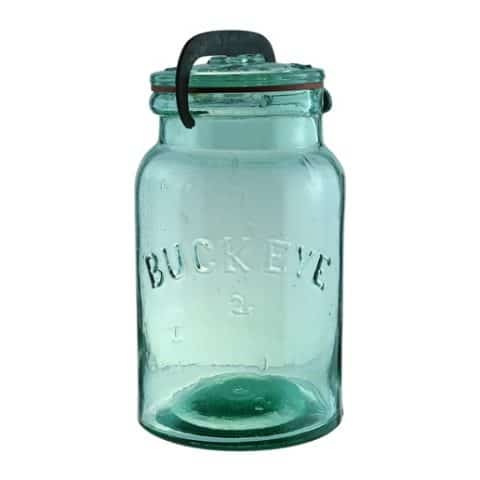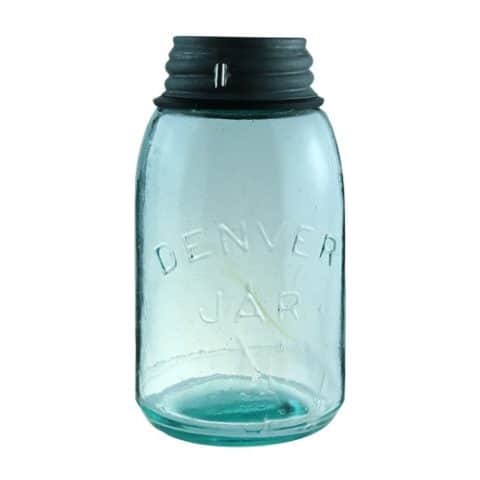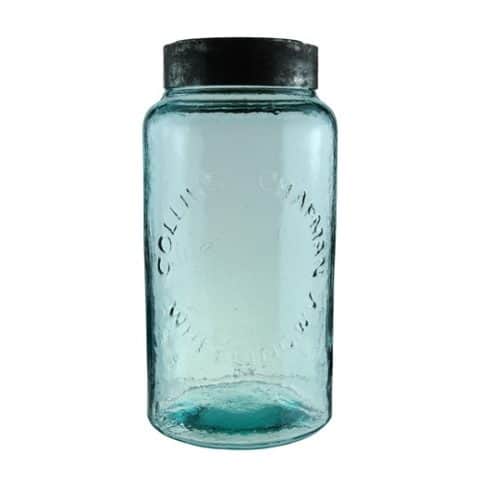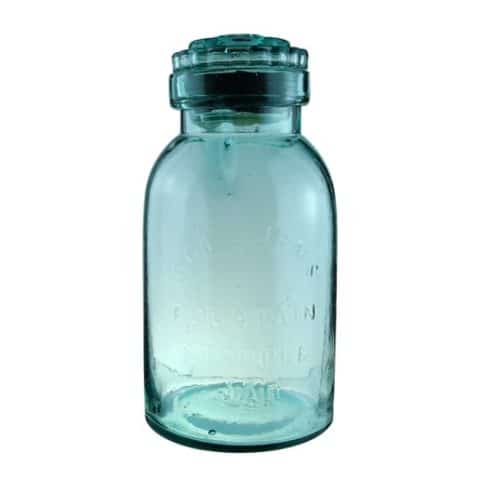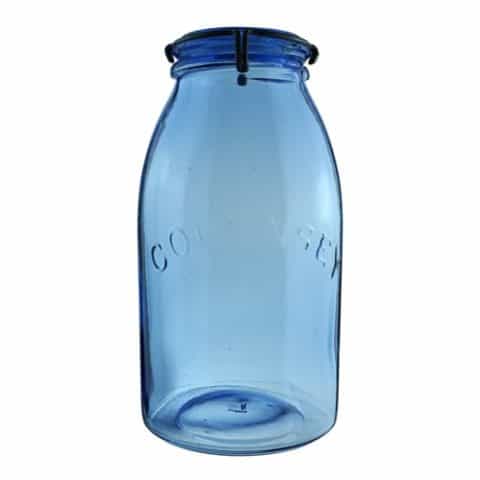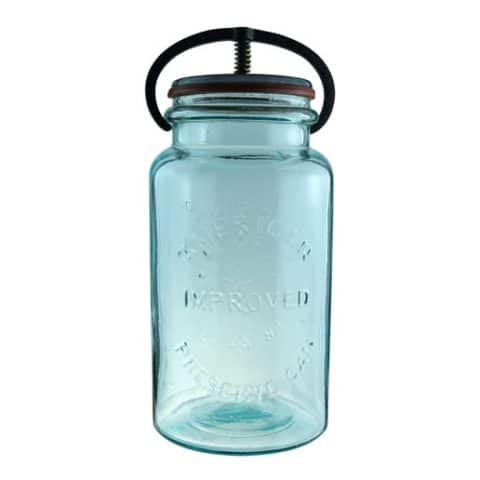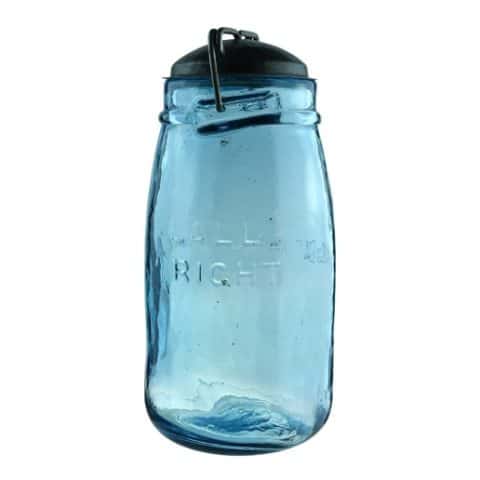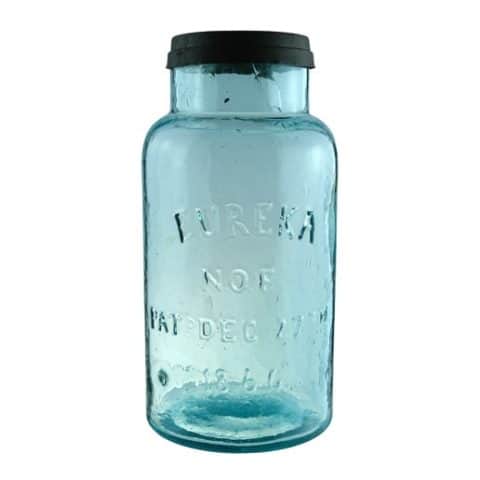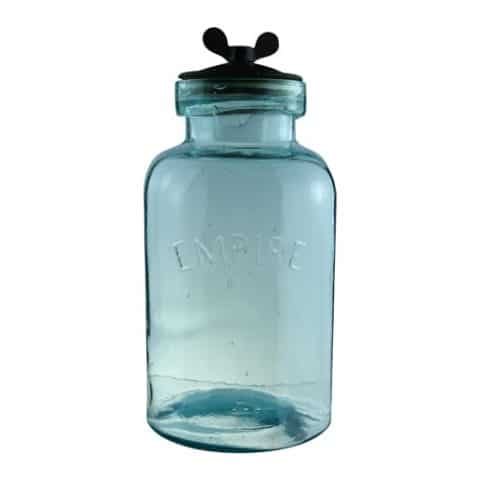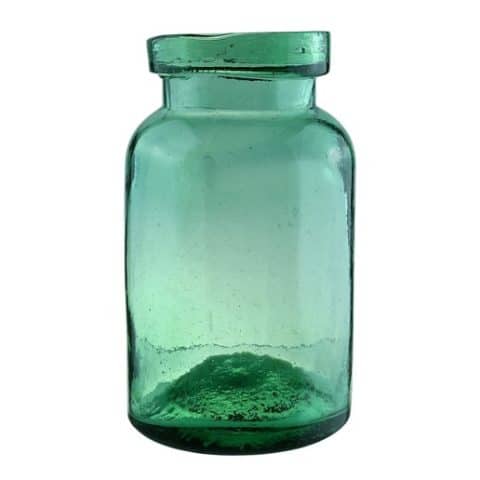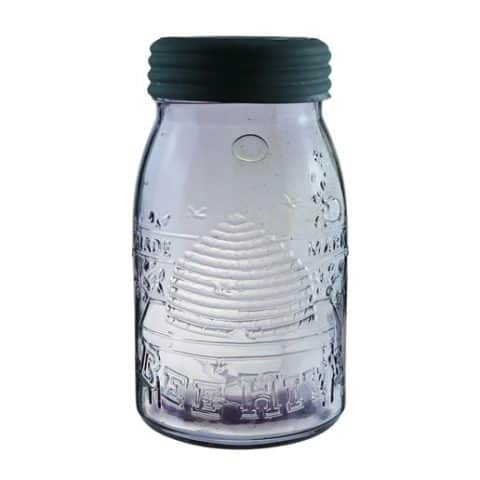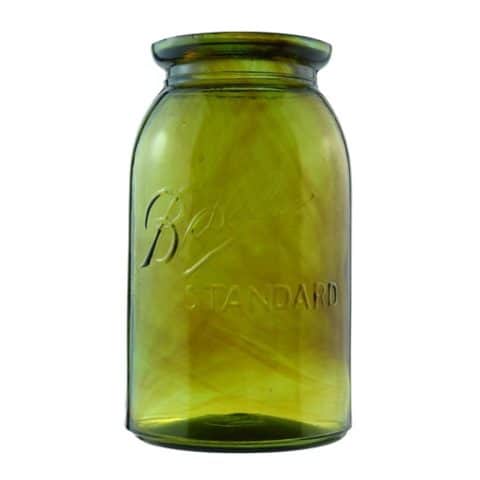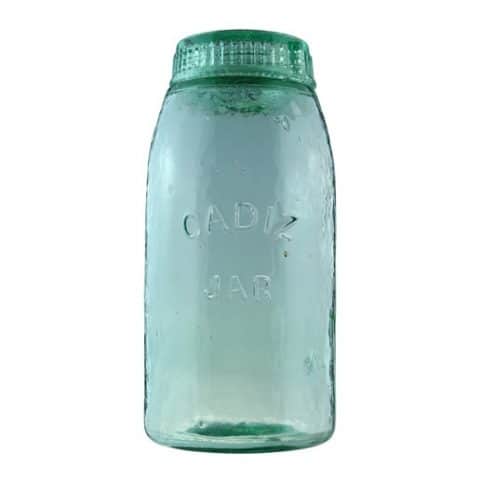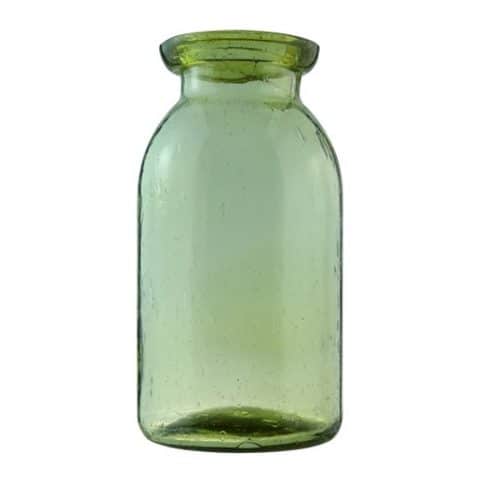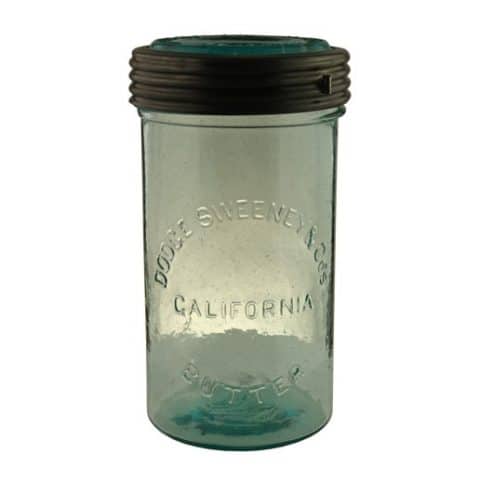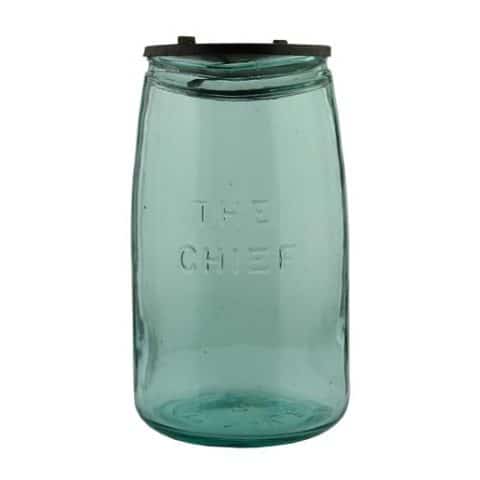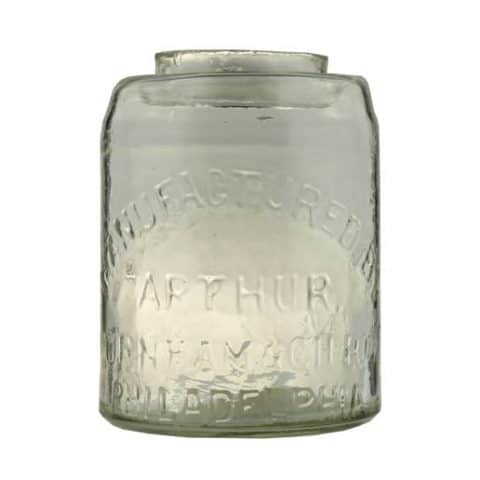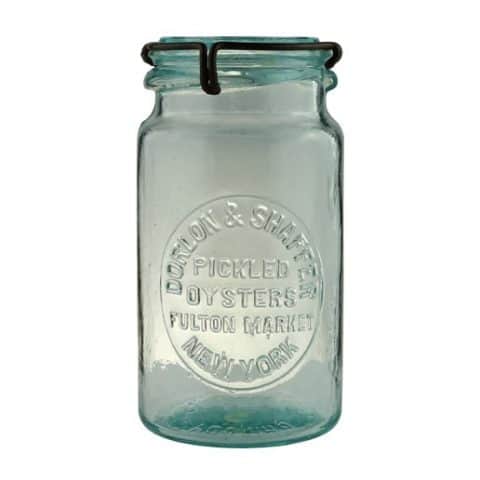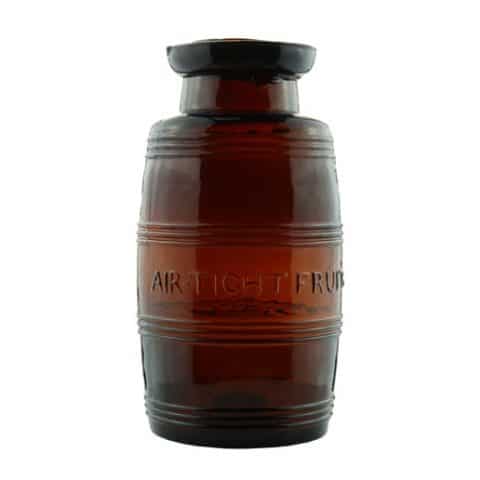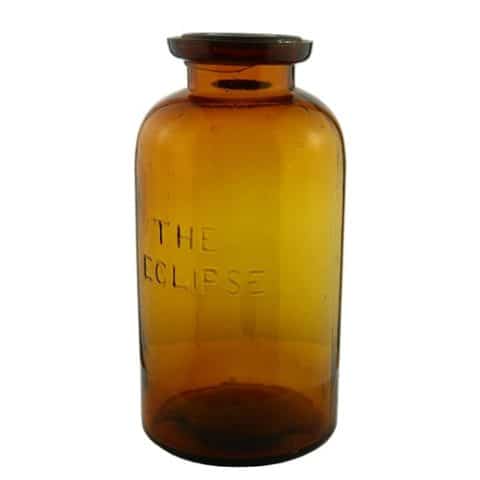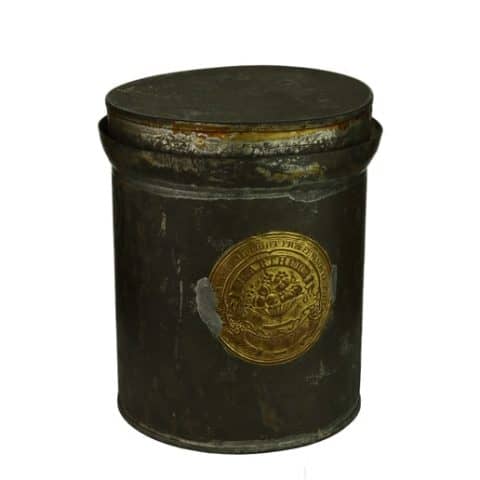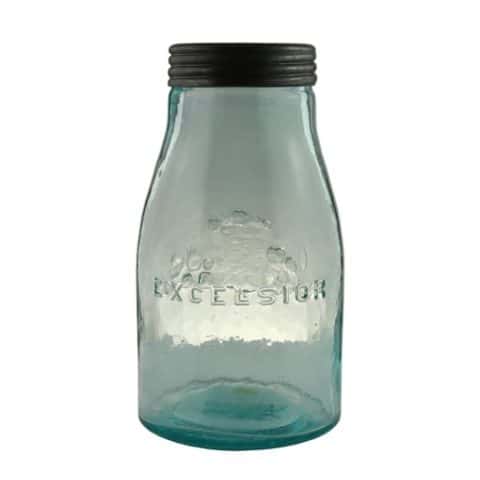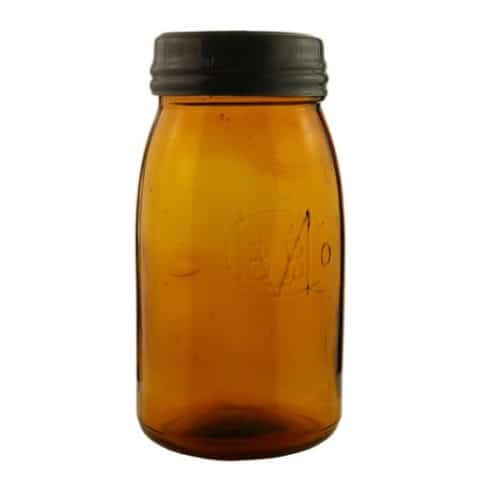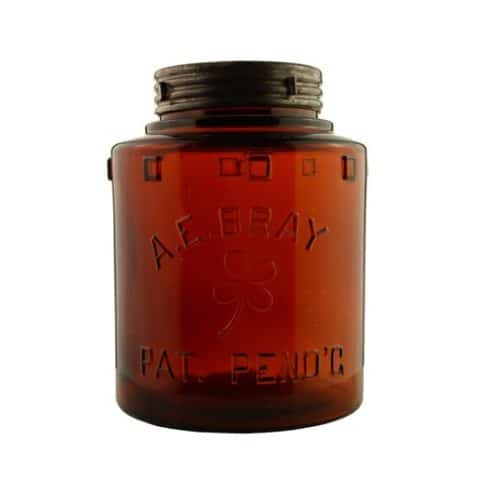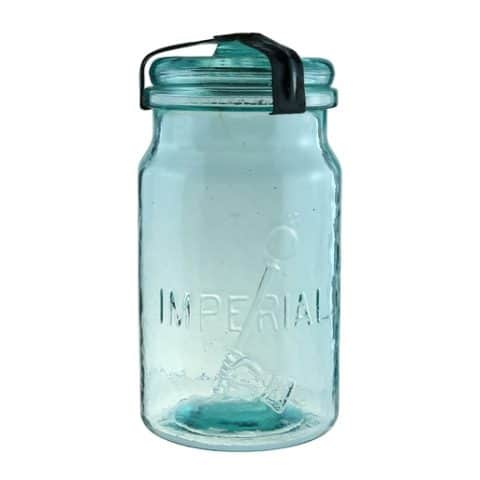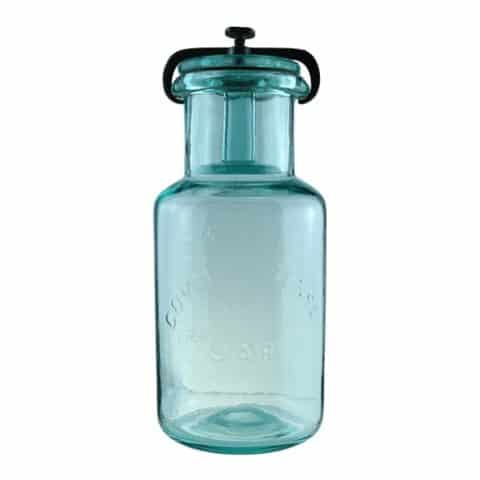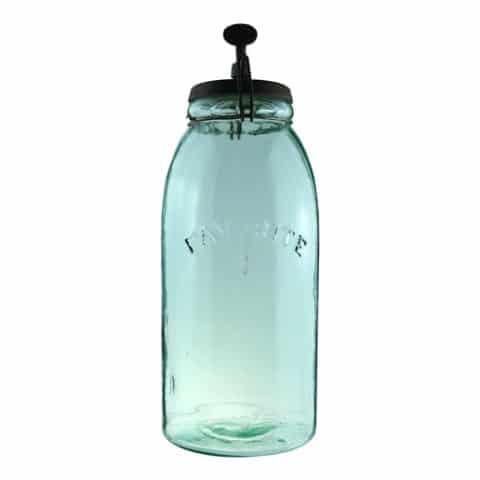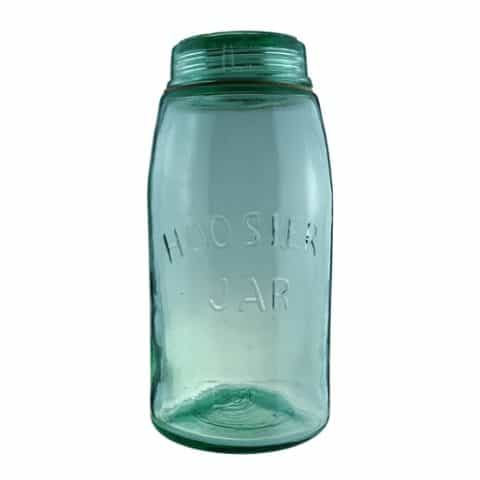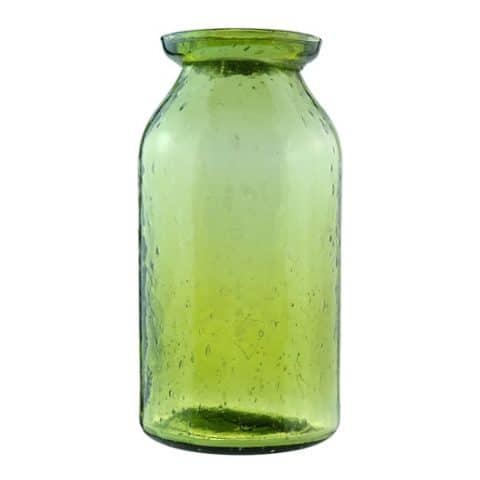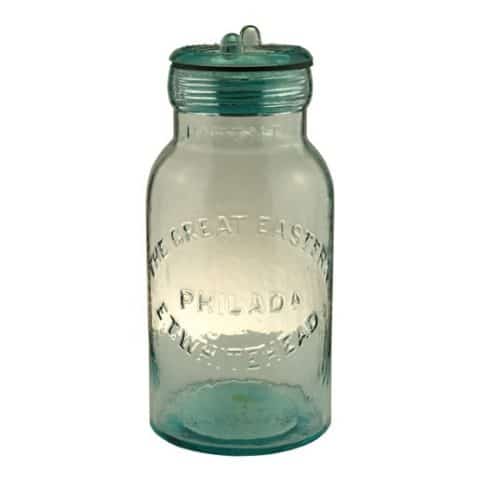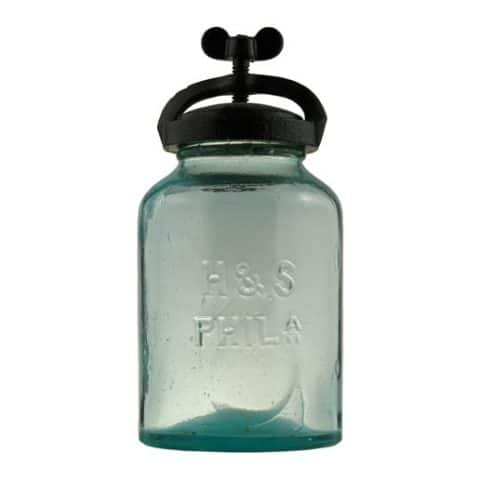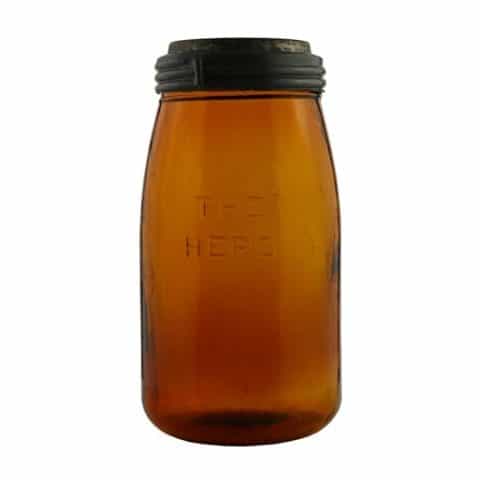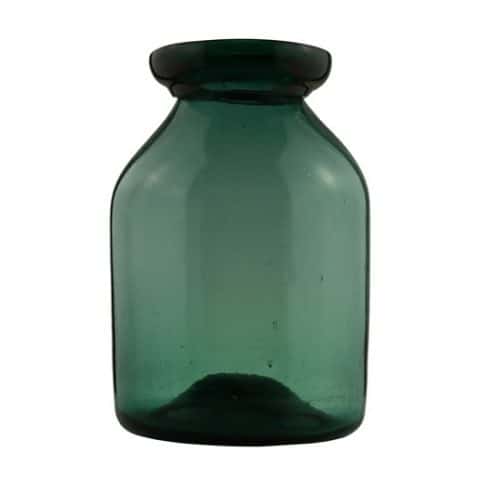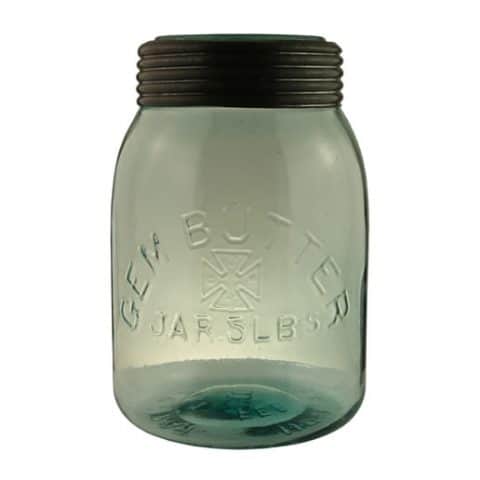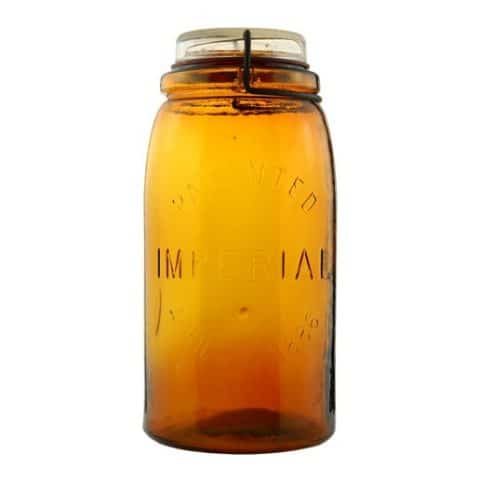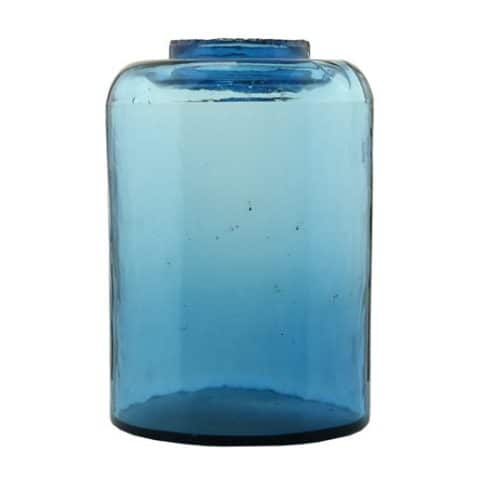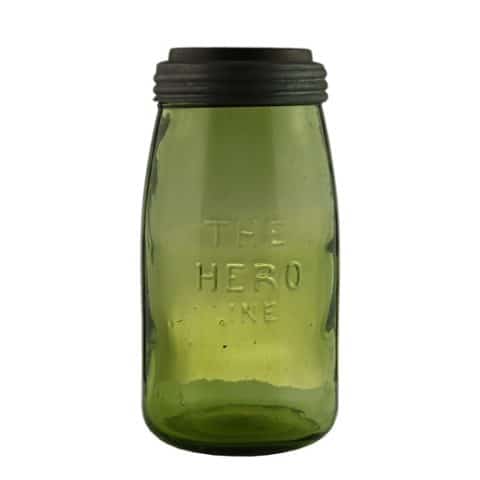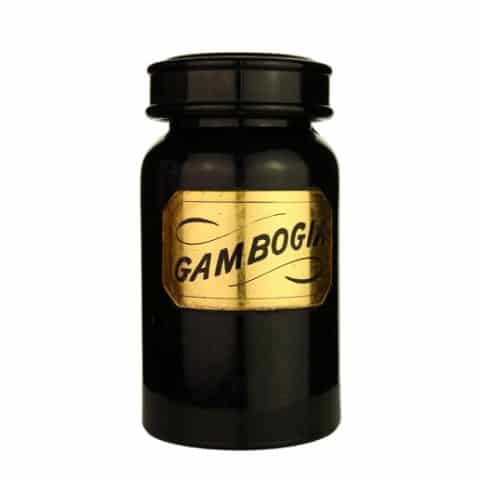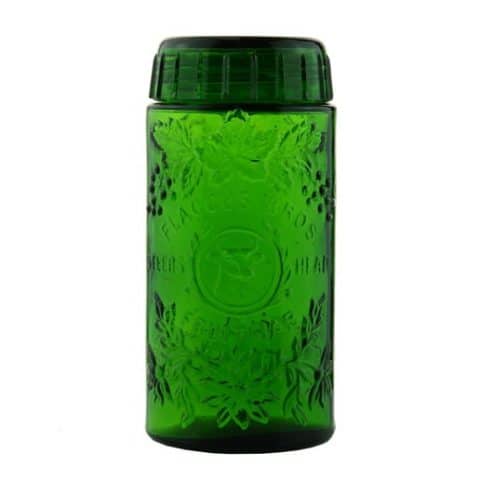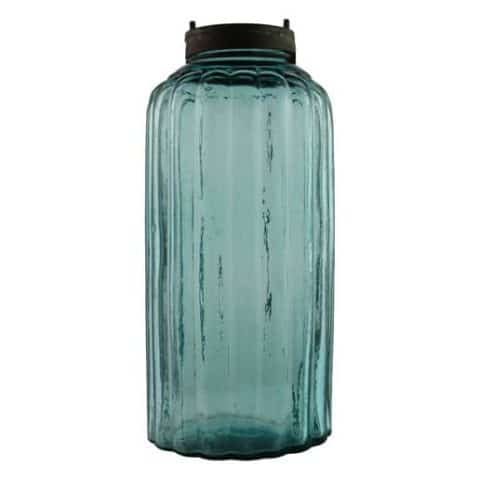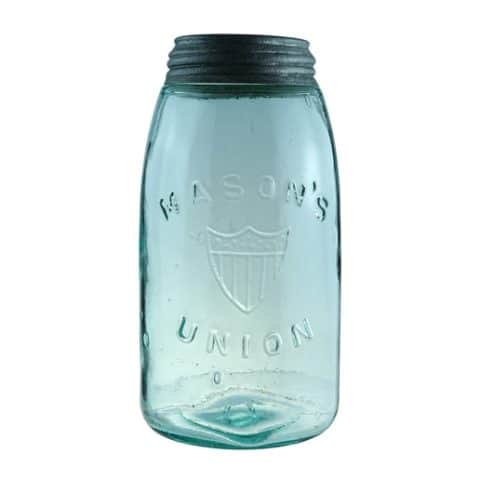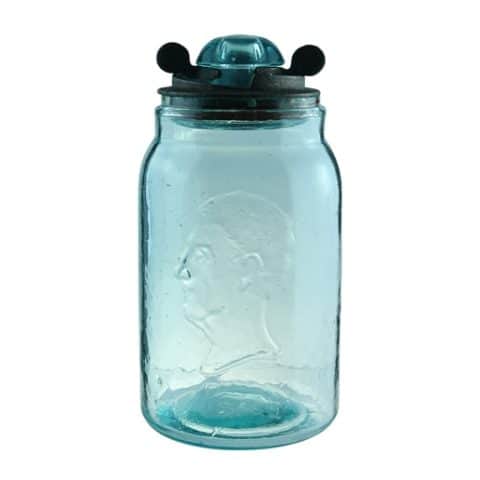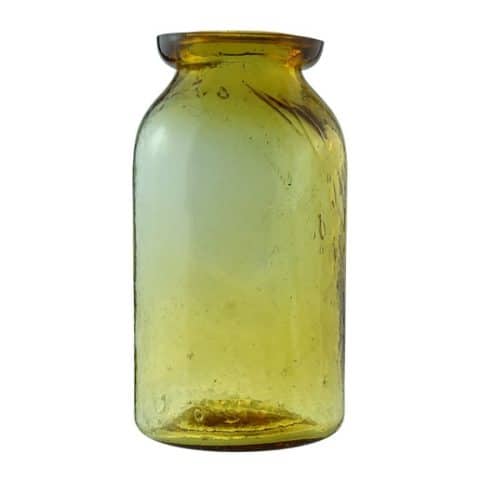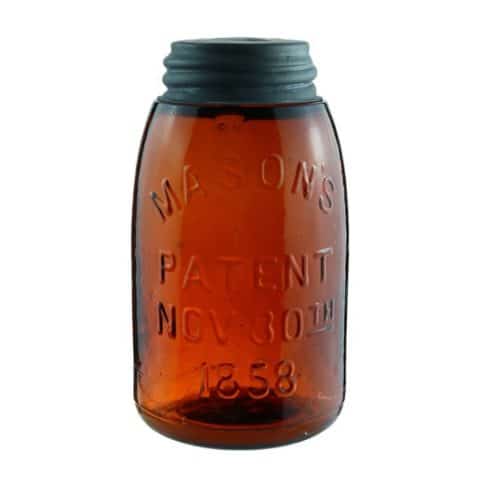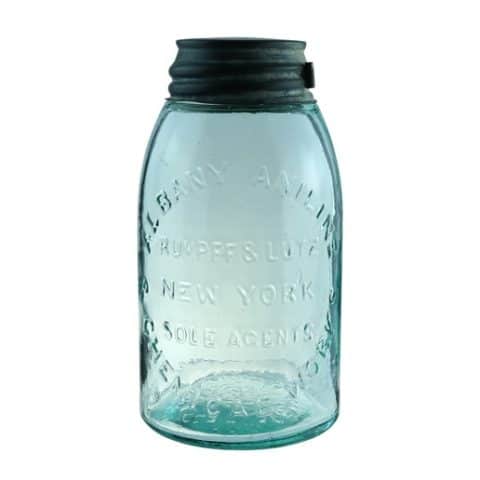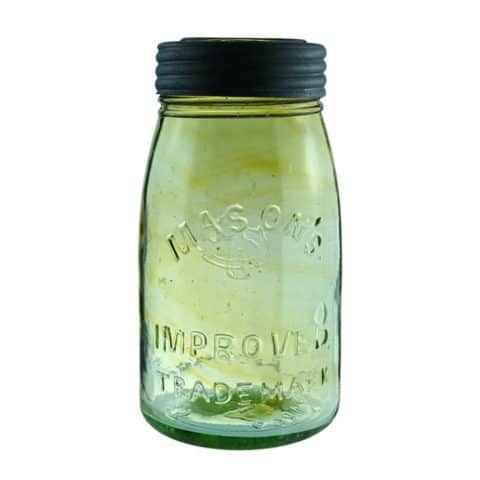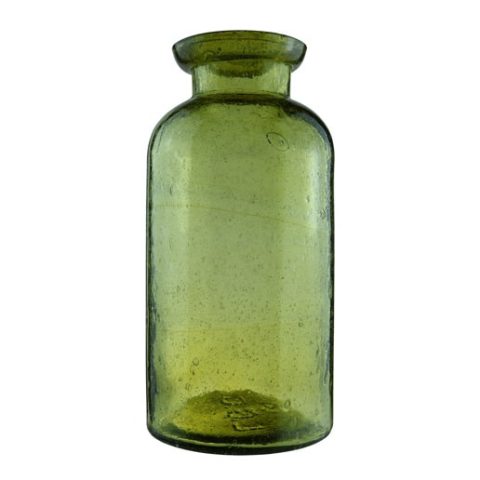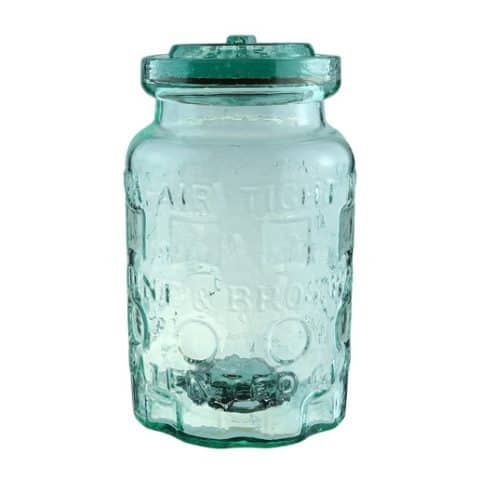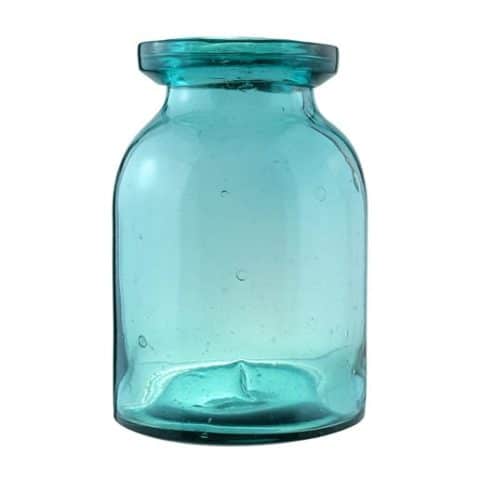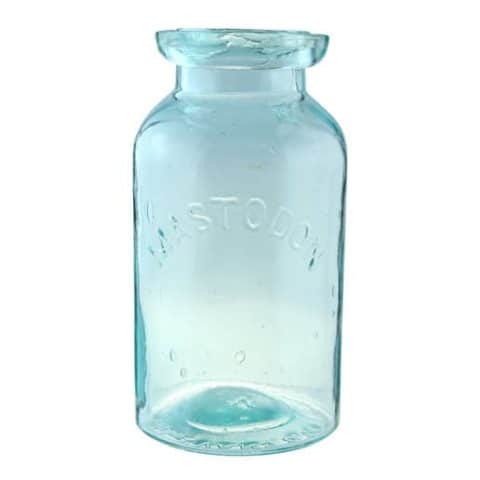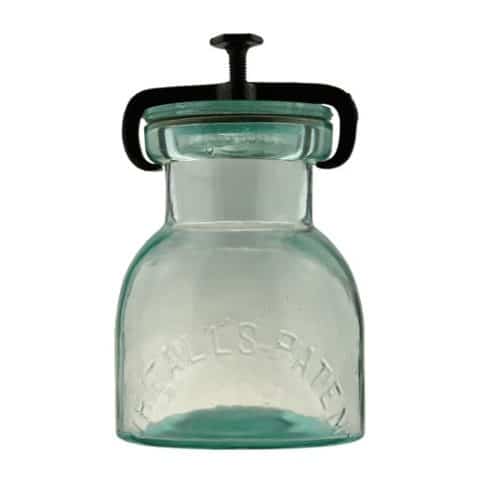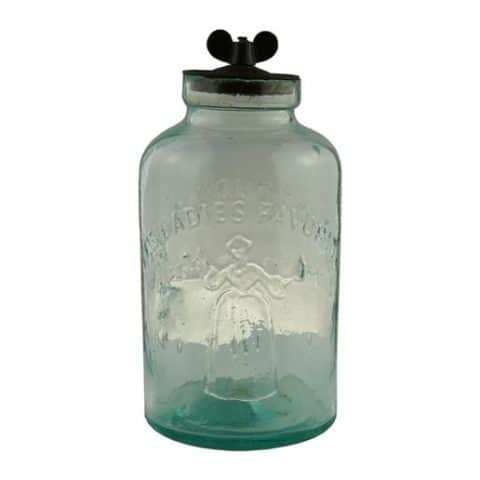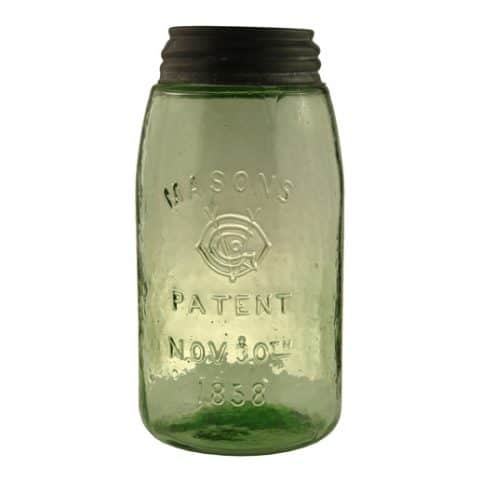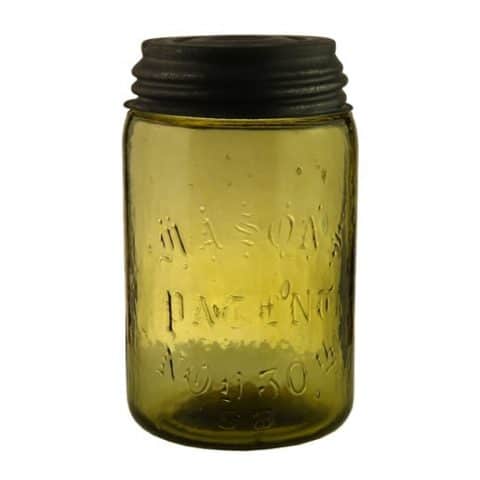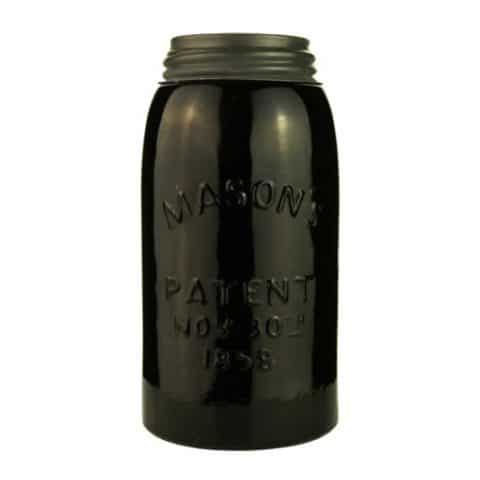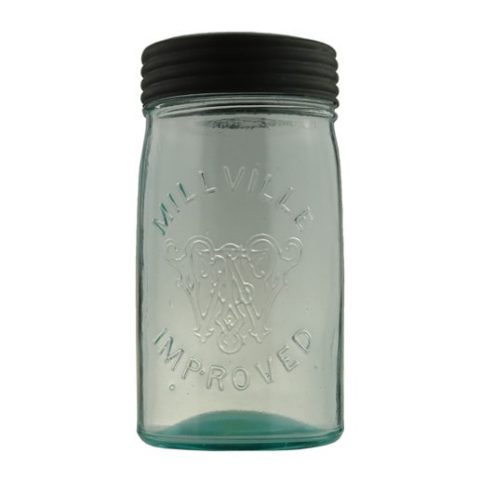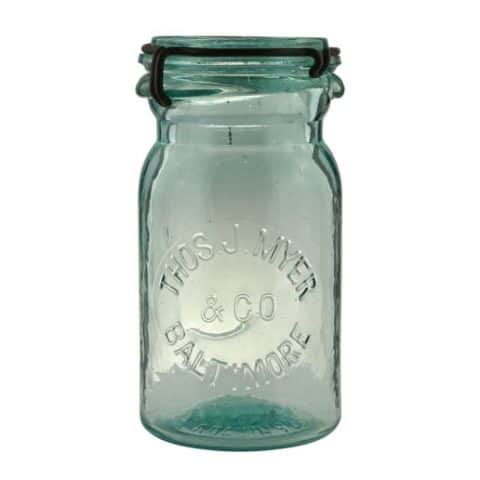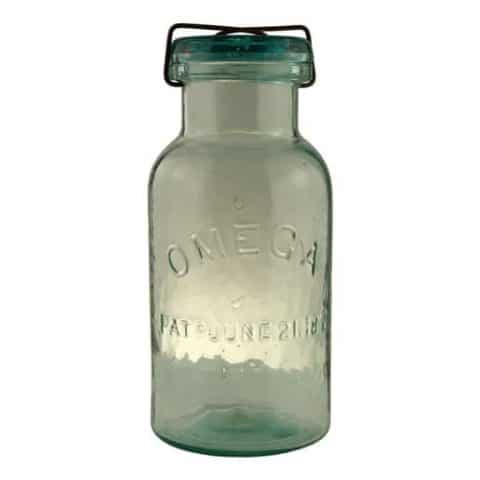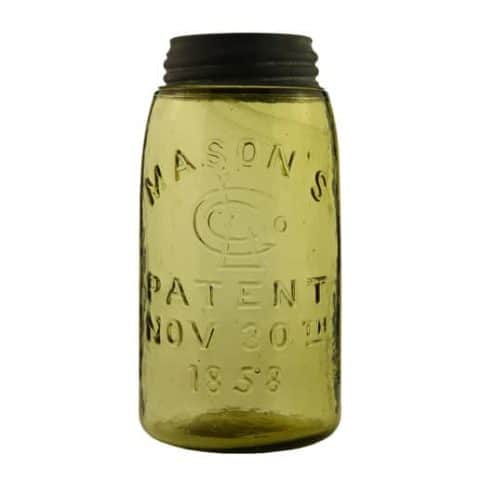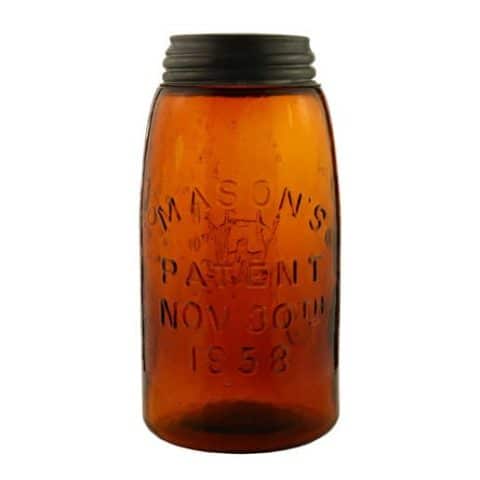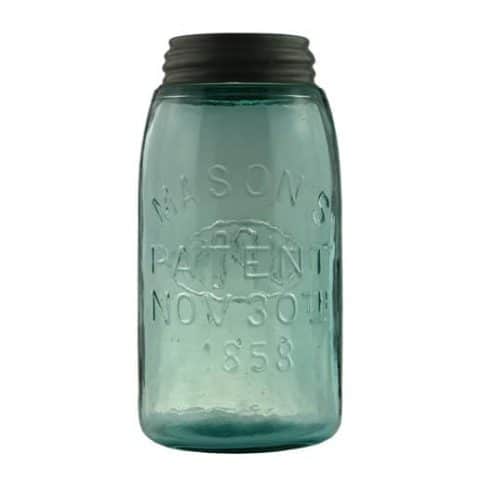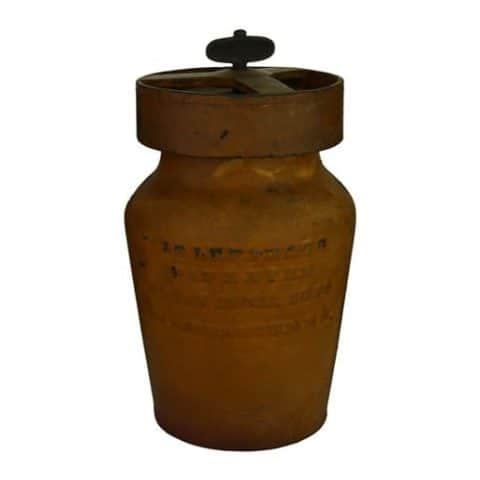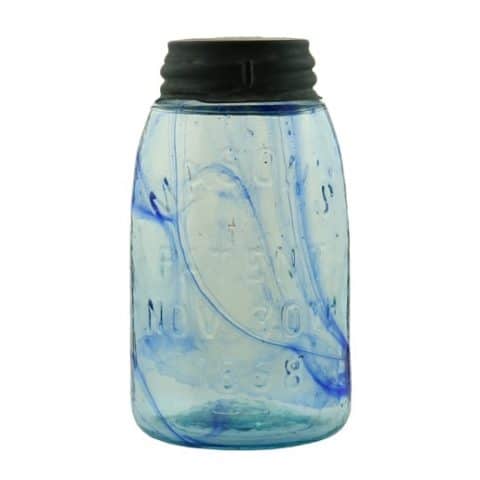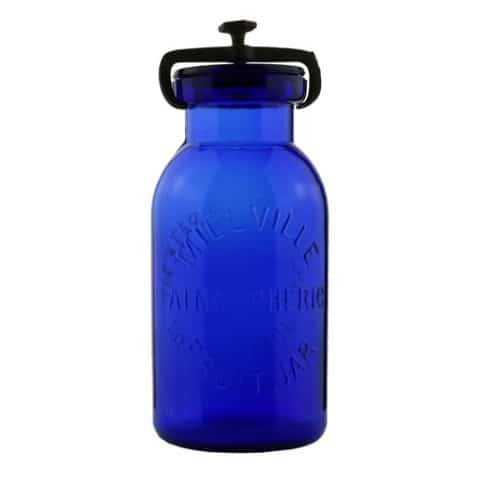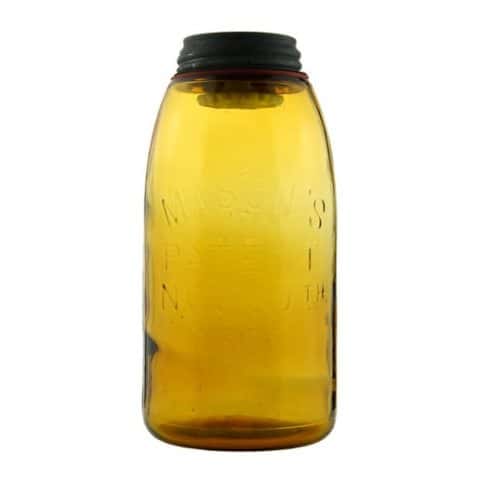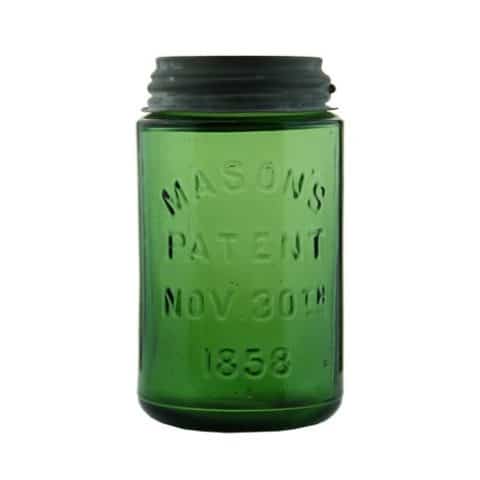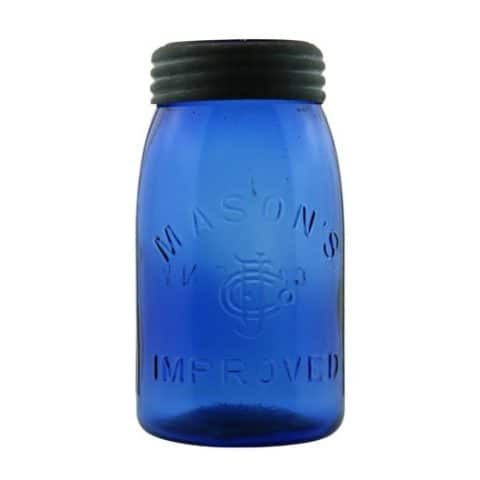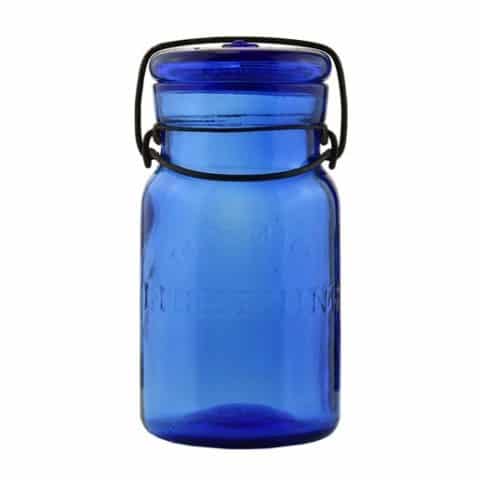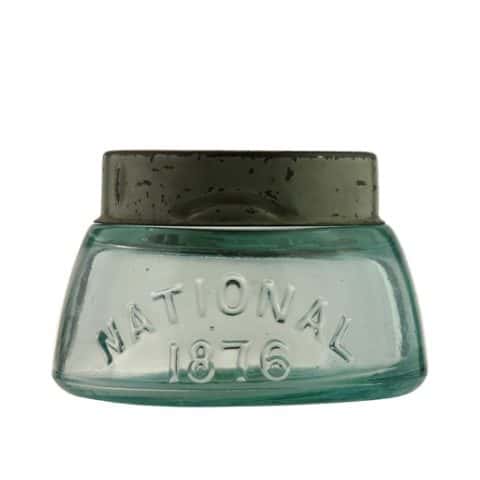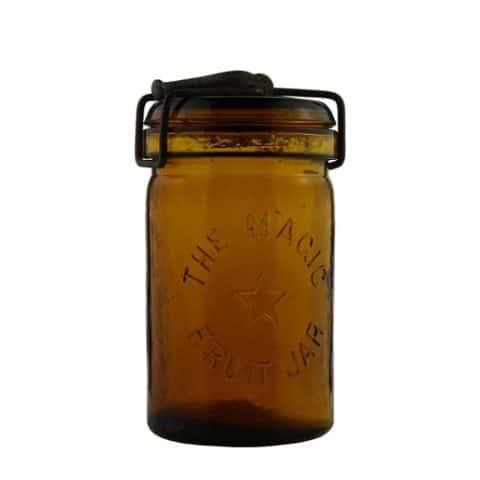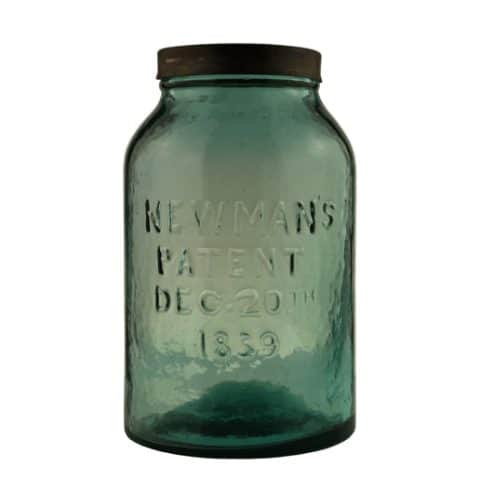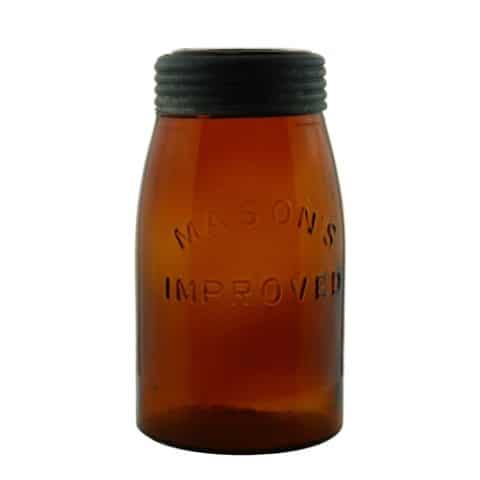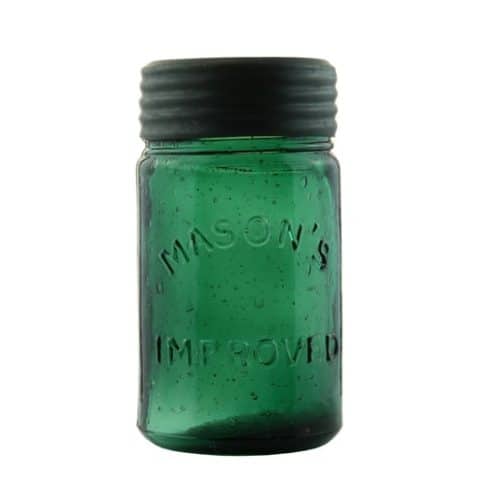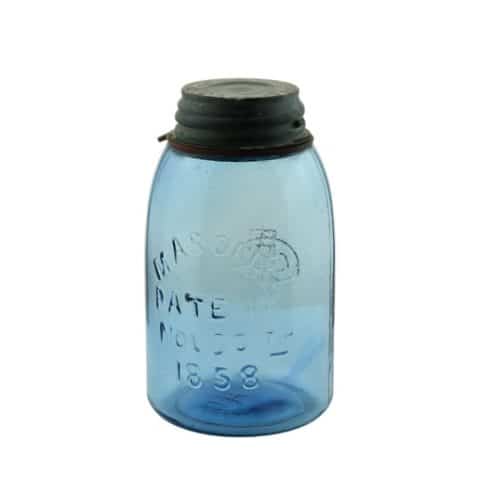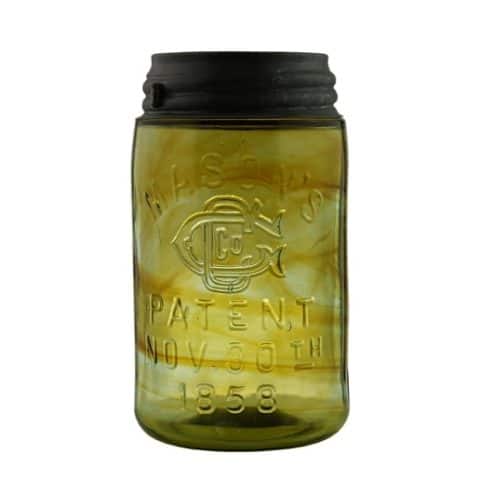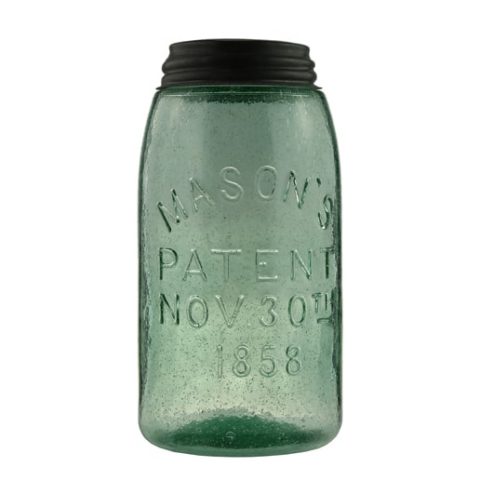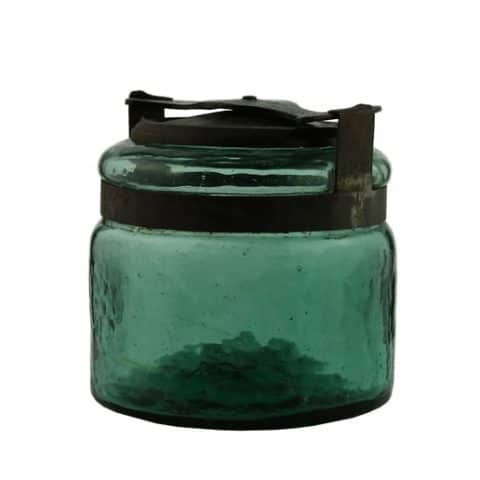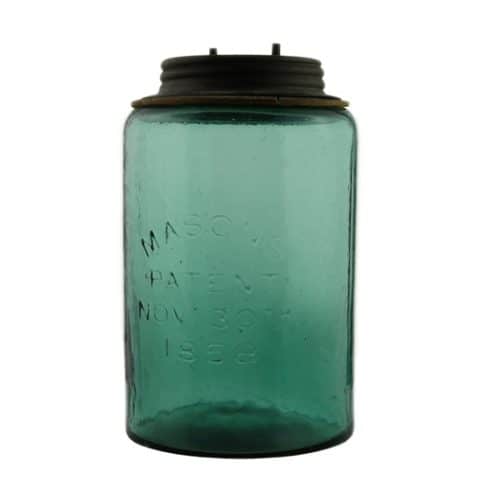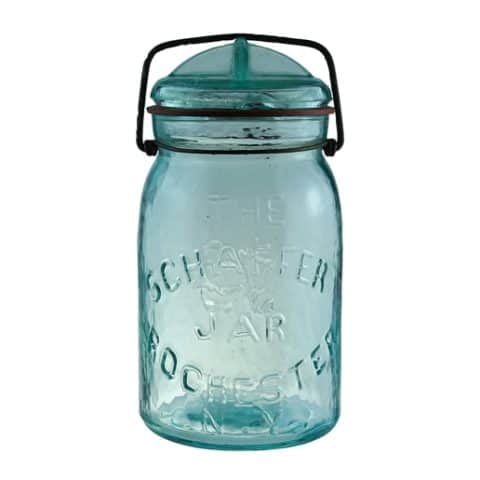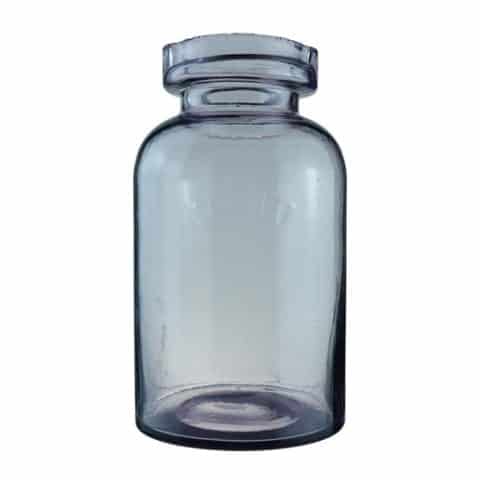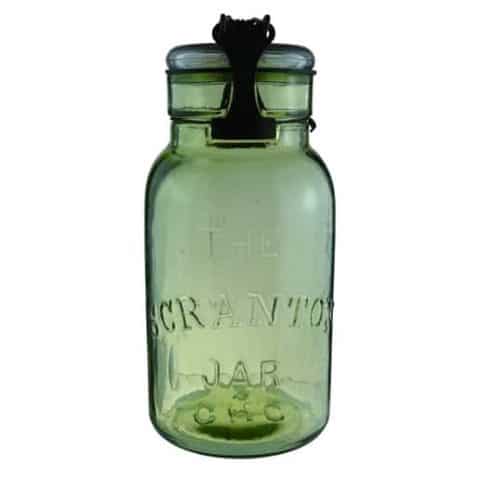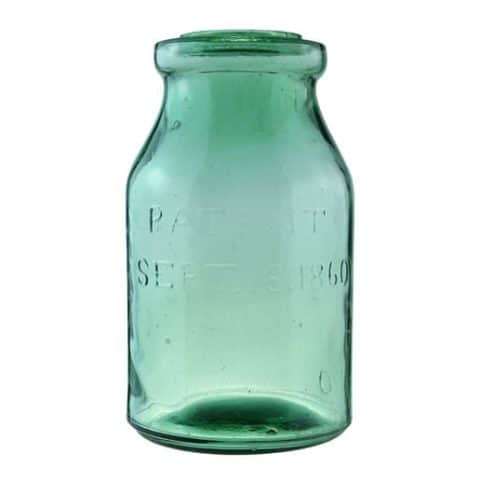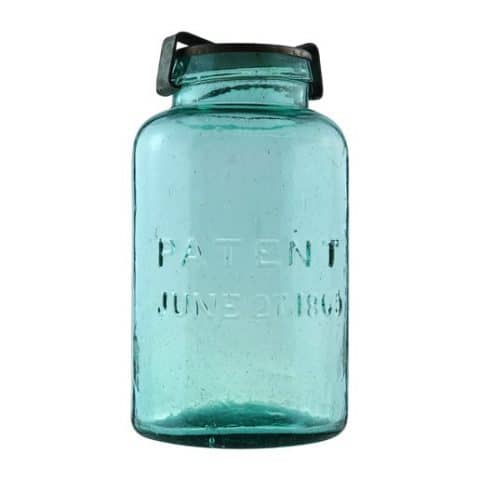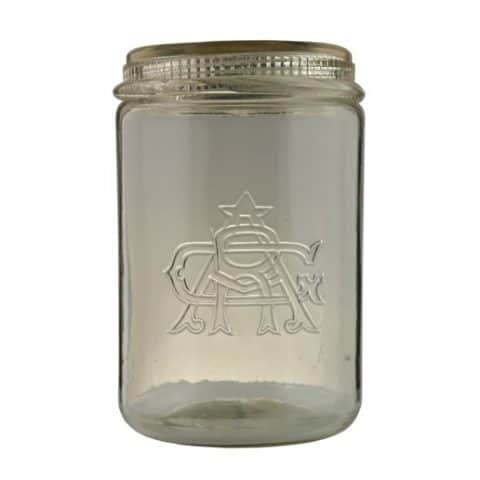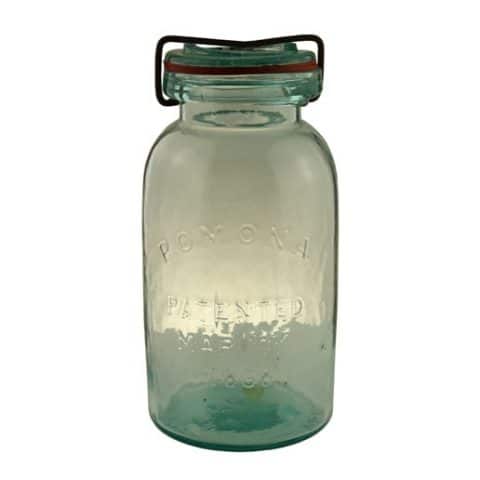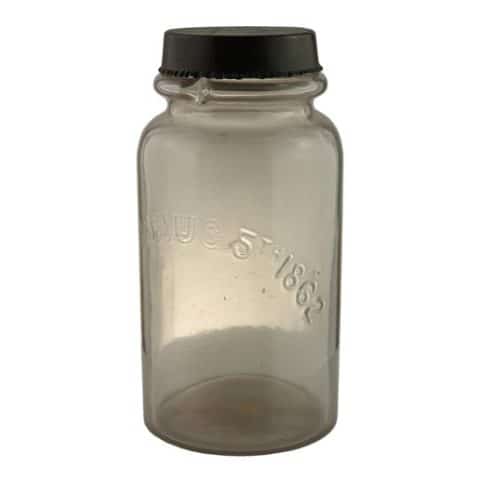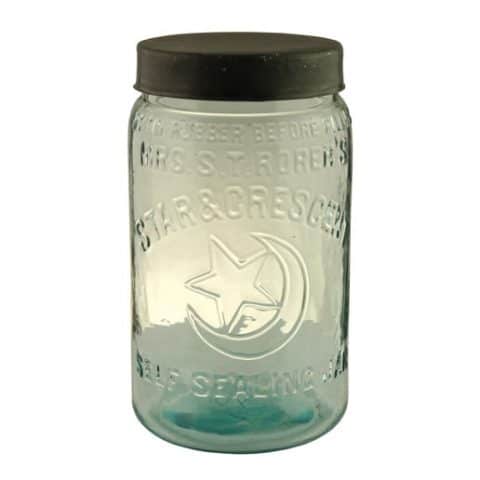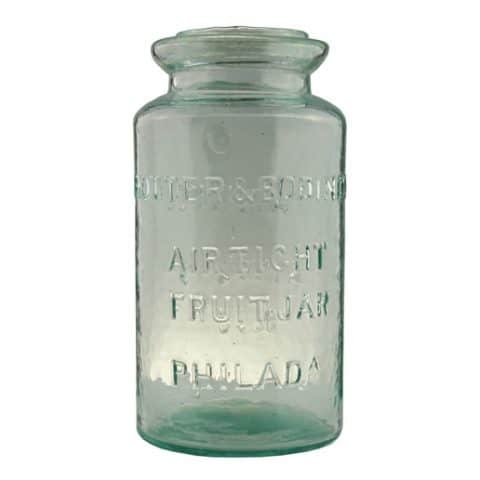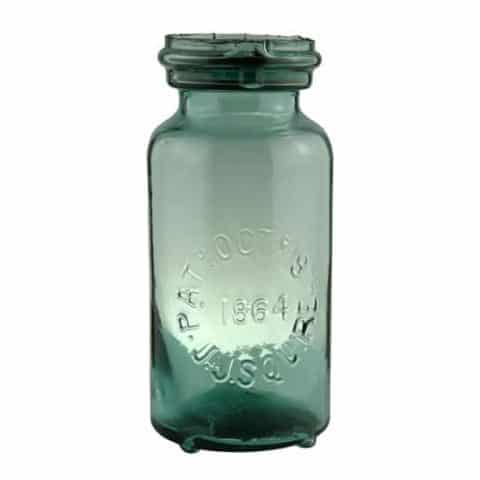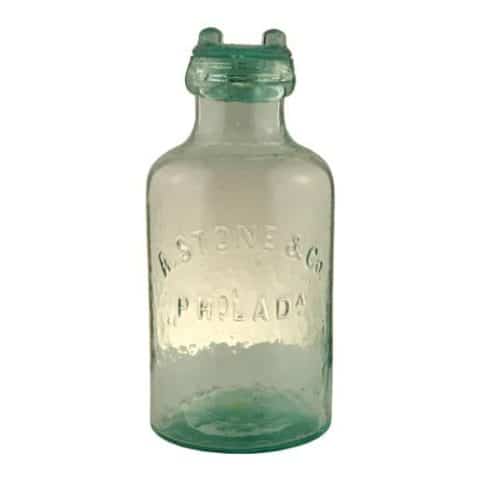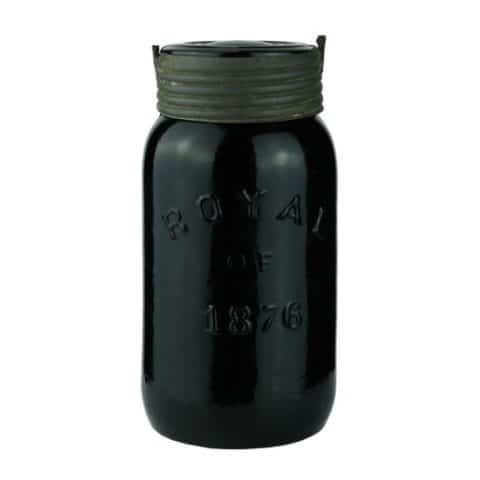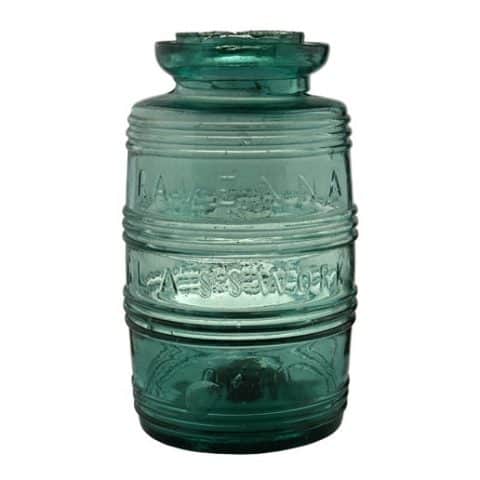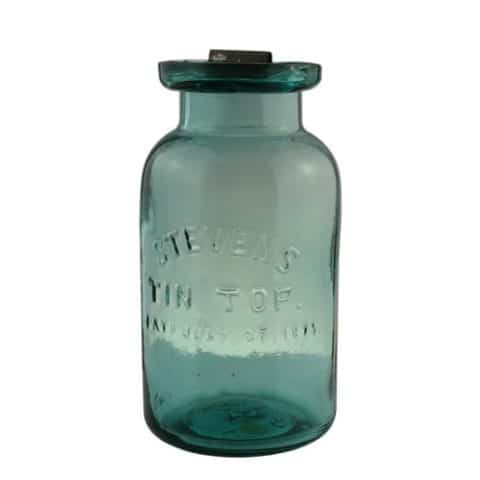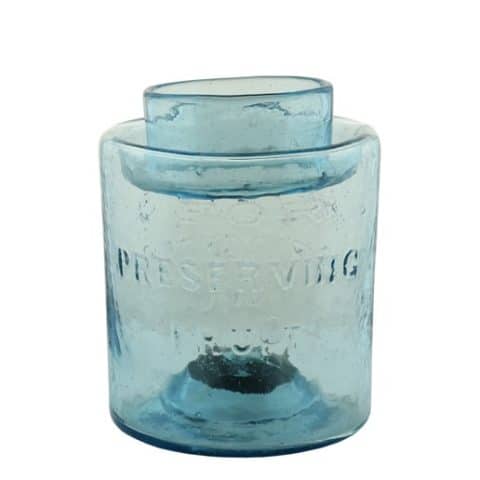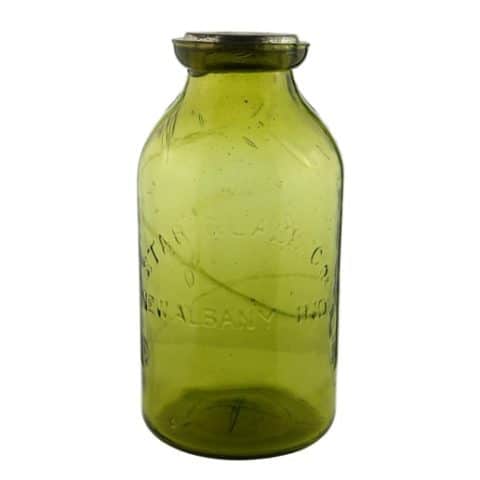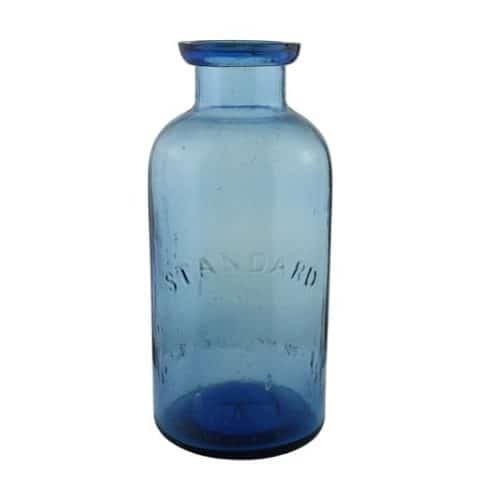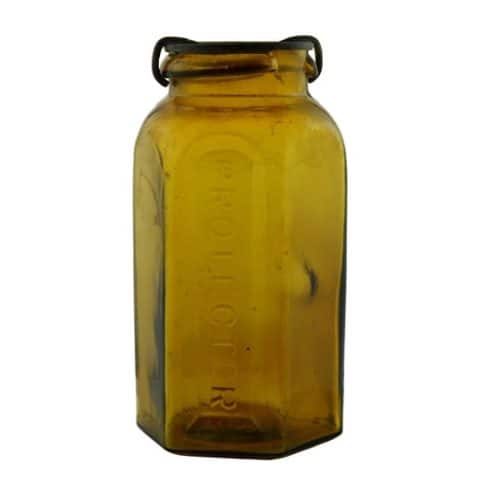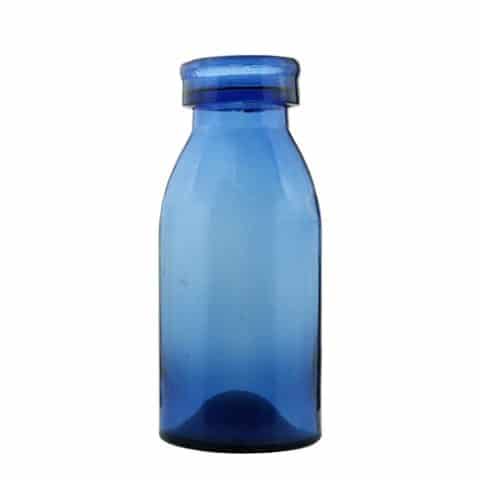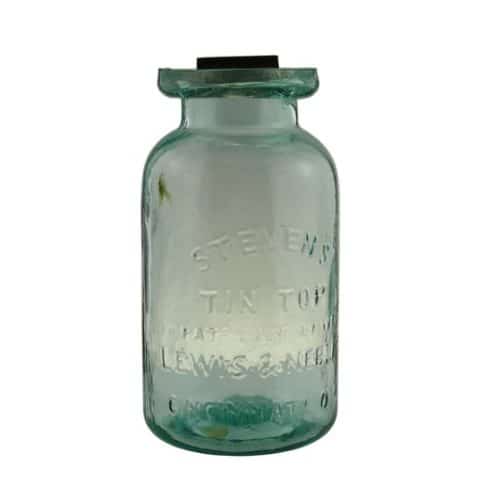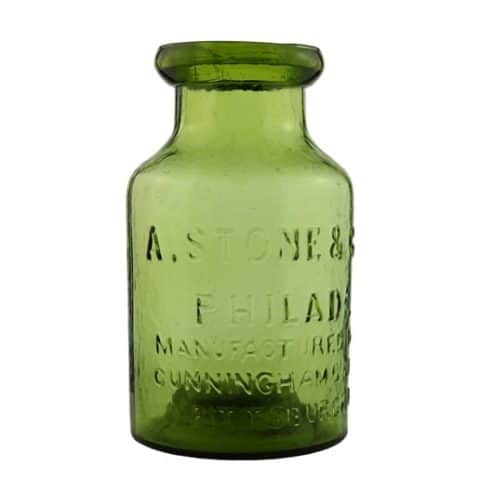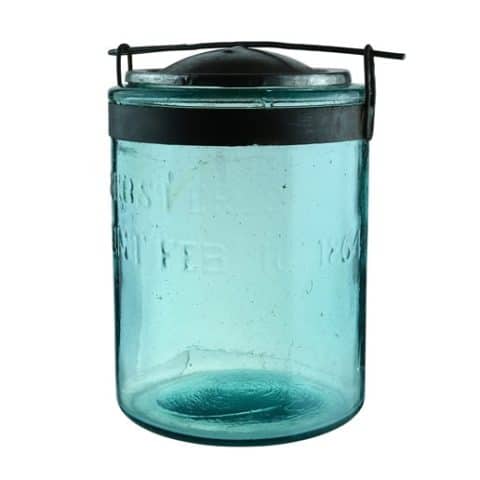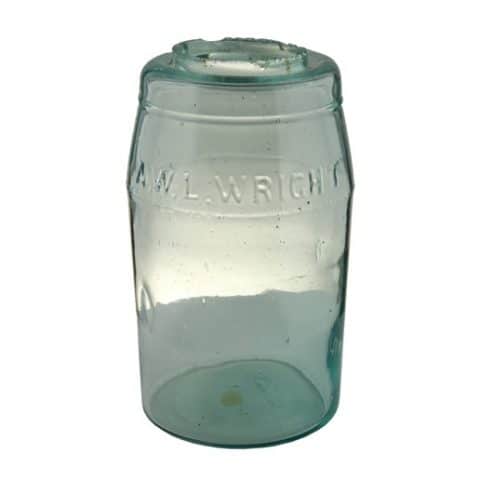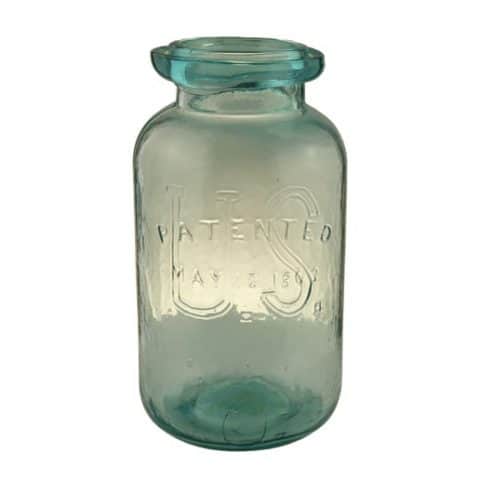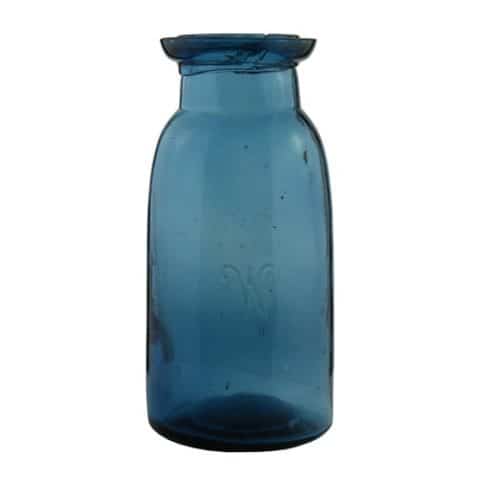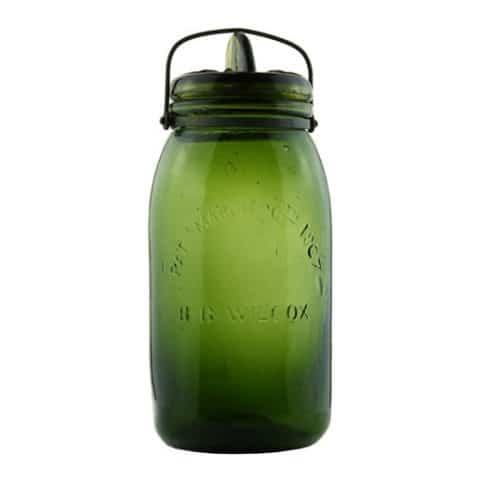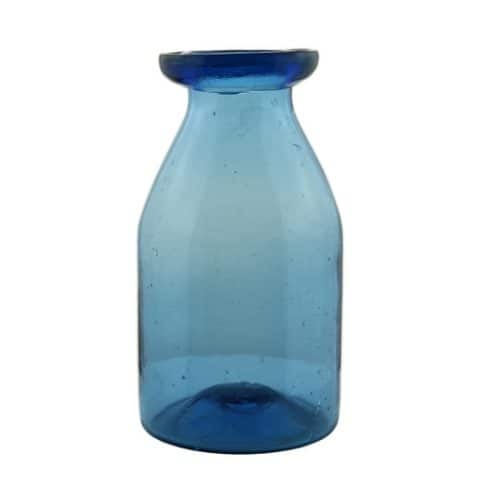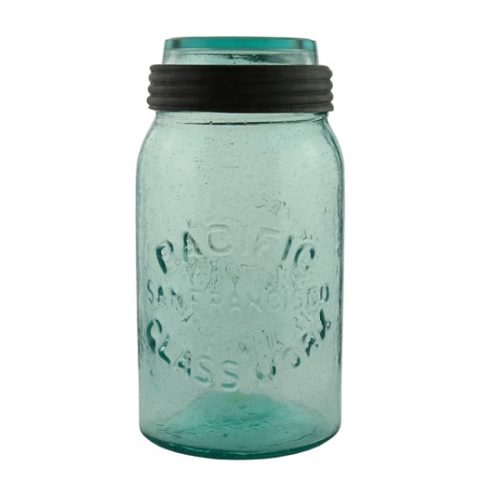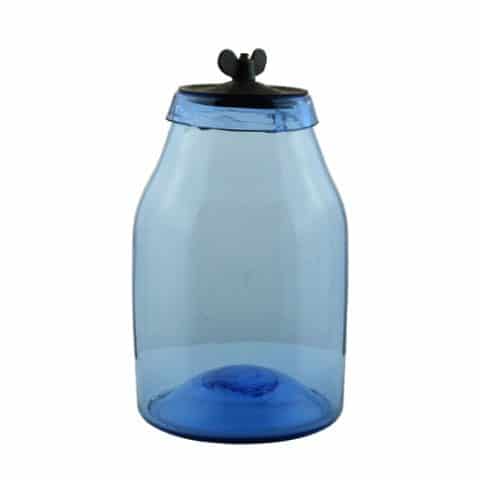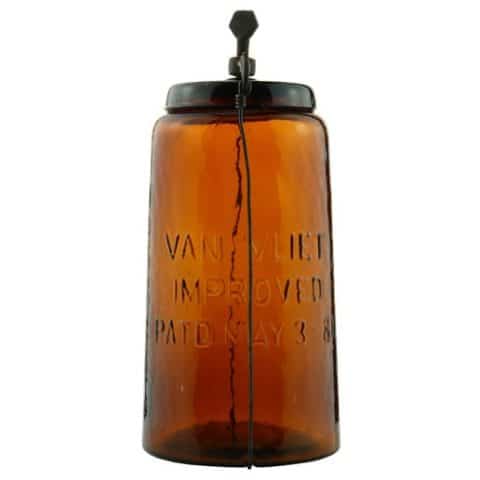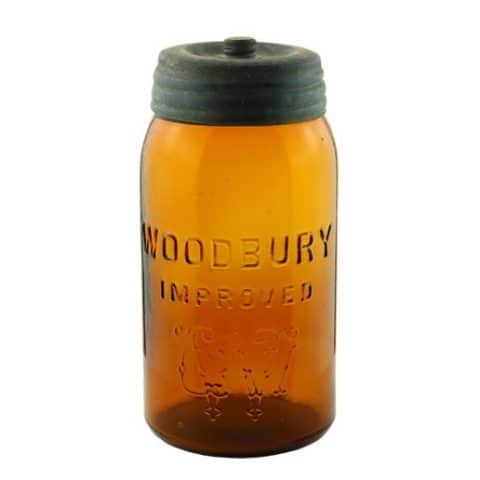Favorite
Favorite
Pat Apr 7 1874
Charles W. Osgood and Aaron H. Saltmarsh
Haverhill, Massachusetts
Apple Green Half Gallon
Provenance: Phil Smith Collection
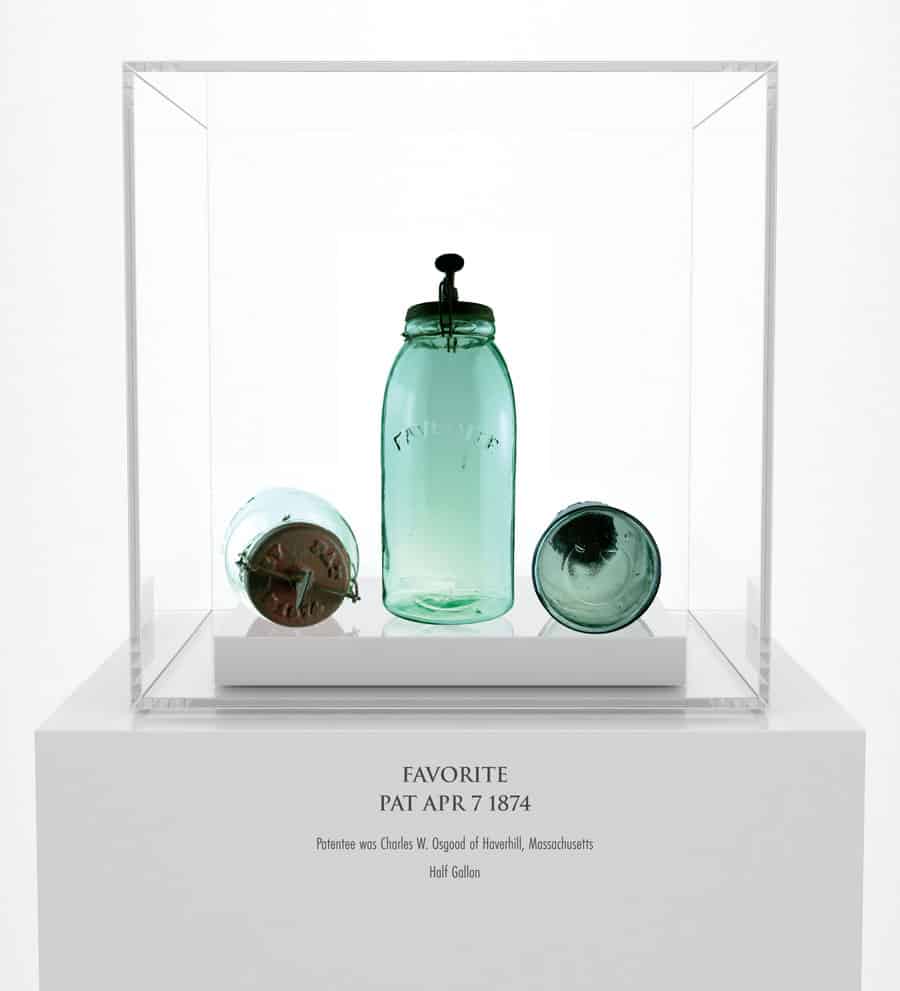
This excellent example of a rare half-gallon “Favorite” jar has an exciting closure and interesting story that we are still determining. One might think it is related to “The Ladies Favorite” jar, also represented in the museum.
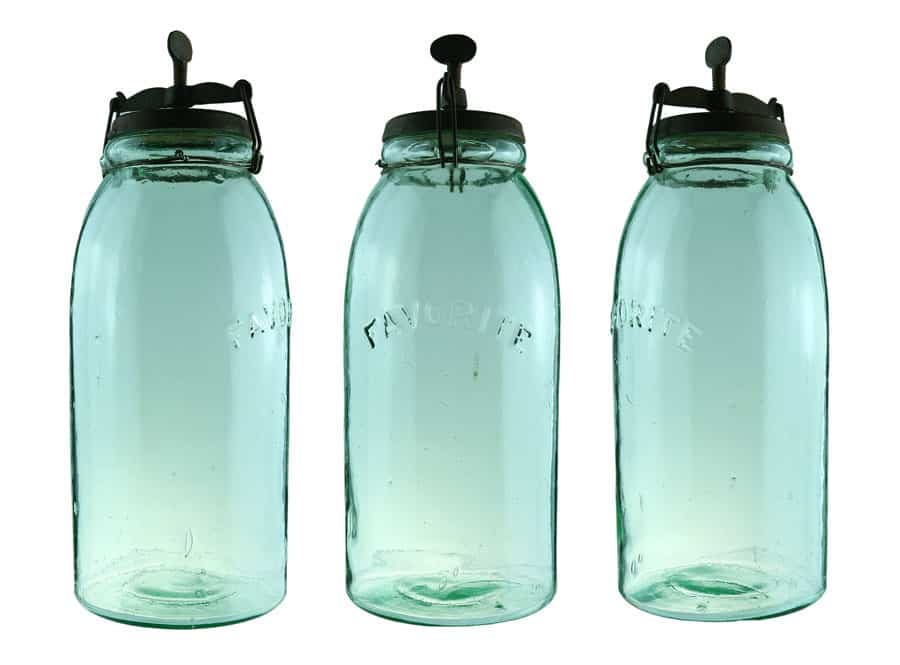
The subject “Favorite” jar is hand-blown and described as apple green in glass color. The embossed copy on the face of the jar simply reads, ‘FAVORITE’ in a graceful shallow convex arch. The sans serif typestyle is bold and somewhat prismatic. The closure is a top seal on a ground lip, with a cast iron lid and a yoke with a thumbscrew. This assembly attaches to the jar that has two wraps of copper or steel wire around the neck of the jar. The copper tie wire, one wire clip, and metal lid are fastened to the jar. Only one wire clip is released by loosening the thumbscrew. The whole closure then hinges to one side of the jar. The cast iron lid is embossed ‘PAT APR 7 1874’ around the outer top. The jar is reported in quarts and half gallons and is generally unavailable or extremely rare.
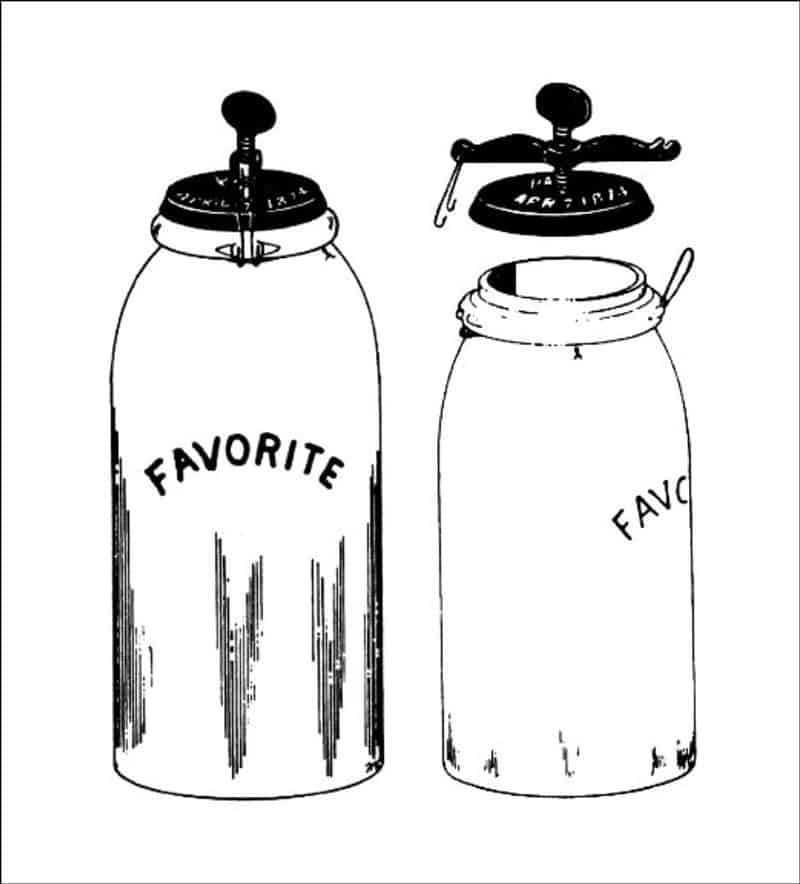
Charles W. Osgood
The inventor and patentee of the “Favorite” jar was Charles W. Osgood of Haverhill, Massachusetts. His patent drawing No. 149,331 for C. W. Osgood. Bottle-Stoppers, Patented April 7, 1874, is represented below. The patent was assigned to Aaron H. Saltmarsh, also of Haverhill. When Osgood obtained the jar patent, he was working as a machinist in the early 1870s, according to the 1870 U.S. Federal Census Return and Haverhill city directories. He was born around 1843 in Massachusetts. He would shift professions and was alternately listed in the balance of the 1870s as a shoemaker or heeler in Haverhill, along with some of his family members, other Osgood relatives, and many others in the city.
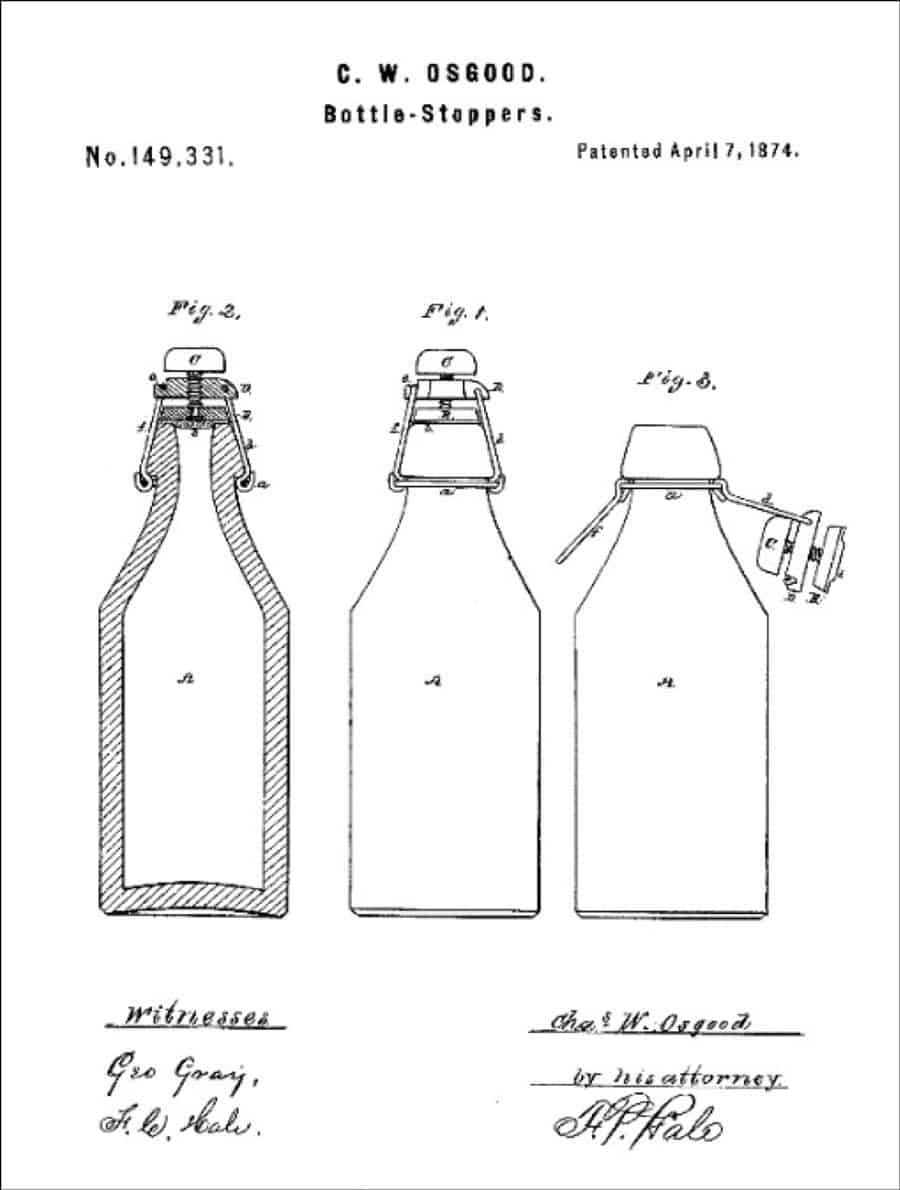
Haverhill, Massachusetts
Haverhill is located 35 miles north of Boston on the New Hampshire border. Located on the Merrimack River, Haverhill began as a farming community of Puritans, primarily from Newbury Plantation. The land was officially purchased from the Pentucket Indians on November 15, 1642 (one year after incorporation) for three pounds and ten shillings. Pentucket was renamed Haverhill (after the Ward family’s hometown in England) and evolved into an important industrial center, beginning with sawmills and gristmills run by water power. In the 18th and 19th centuries. Haverhill developed woolen mills, tanneries, shipping, and shipbuilding. The town was home to a significant shoe-making industry for many decades. By the end of 1913, one-tenth of the shoes produced in the United States were made in Haverhill, and because of this, the town was known as the “Queen Slipper City.”
Aaron H. Saltmarsh
As noted above, the Osgood patent was assigned to Aaron H. Saltmarsh, who faced challenges producing the “Favorite” jar and others after he formed the American Iron Glass Pipe & Plate Company in Haverhill, Mass. The Daily Evening Bulletin on May 25, 1885, reported, “Real Estate Sale. The Haverhill Iron Glass Works were sold at 1 P.M. today to L .V. Spaulding for $9,600. H. Pearl, Auctioneer.”
Aaron Henry Saltmarsh was born in 1824 in Hooksett, Merrimack, New Hampshire. His father, Aaron H. Saltmarsh, was 31 and his mother, Joanna George, was 25. He married Elvira T. Harvey in about 1847 in Concord, Merrimack, New Hampshire. They were the parents of at least three daughters. He lived in Concord, Merrimack, New Hampshire, for about 20 years and in New Hampshire, in 1870. He died on December 22, 1906, in Haverhill, at the age of 82.
In PERRY v. HALE and others, the Supreme Judicial Court of Massachusetts, Essex, on February 23, 1887, reported the following: Contract against Hazen M. Chase, Aaron H. Saltmarsh, Cyrus D. Furber, Joab Peasley, George A.. Hale, and others, stockholders in the American Iron Glass Pipe & Plate Company. At the trial in the superior court before ALDRICH, J., it appeared that in March 1884, A. H. Saltmarsh, one of the defendants, was engaged in setting up a company for the manufacture of glass at Haverhill, under certain patents, and that the plaintiff, in consequence of the representations of Saltmarsh as to the value of his invention, was induced to subscribe for shares of stock in the “American Iron Glass Pipe & Plate Company,” and paid in the amount subscribed by him. The invention proved to be worthless, and the plaintiff brought this suit to recover the sum paid by him for stock in the company. Upon the facts, the nature of which appear in the opinion, the court ruled that this action could not be maintained against either of the defendants, and directed a verdict for the defendants, and, at the request of the plaintiff, reported the case for the determination of the supreme judicial court.

Gaynor Glass Manufactory
The jar maker is unknown though the John Gayner Glass Manufactory in Waterford, New Jersey (1874-1879) is suggested as a possibility by jar researchers and authorities. The 1922 Chemical Engineering Catalog with the Story of New Jersey by William Starr Meyers notes that John Gayner, with S. J. Pardessus as a partner, founded the John Gayner Glass Manufactory in 1874. In 1879, the partners moved to Salem, New Jersey, leasing the Holz, Clark & Taylor glassworks and renaming the operation the Broadway Glass Works.
It is entirely possible that the John Gayner Glass Manufactory did not make the “Favorite” jar, although the ties with Gaynor are intriguing. Both the inventor and assignee of the jar patent lived in Haverhill, Massachusetts, 300 miles north of Salem, New Jersey, and the time period is correct.
Gaynor Glass Works made a later machine-made rendition of the “Favorite” jar from 1910 to 1918. The ground lip jar was embossed ‘Favorite’ upwardly in a slanted upper and lower case cursive typestyle with ‘TRADE MARK’ embossed on the front heel. The lid for this jar has a pronounced hump in the center, described in a Gayner sales brochure as “causing a perfect vacuum suction on the inside.” Just how this worked was not explained.
Primary Image: “Favorite” half-gallon apple green jar imaged on location by Alan DeMaison, FOHBC Virtual Museum Midwest Studio.
Secondary Image: Second example of a half-gallon “Favorite” jar in a blue aquamarine glass – Greg Spurgeon, North American Glass
Support: Reference to Gayner Glass Works by Bill Lockhart, Beau Schriever, Bill Lindsey, and Carol Serr
Support: Reference to Fruit Jar Annual 2020 – The Guide to Collecting Fruit Jars by Jerome J. McCann
Support: Reference to Red Book No. 12, the Collector’s Guide to Old Fruit Jars by Douglas M. Leybourne, Jr. Use of Creswick illustration courtesy Doug Leybourne.
Join the FOHBC: The Virtual Museum is a project of the Federation of Historical Bottle Collectors (FOHBC). To become a member.

